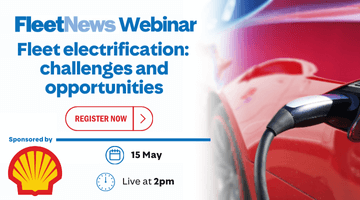By Paul Hollick, chair of the Association of Fleet Professionals (AFP)
In several areas of electric vehicle (EV) operation, fleets are finding themselves in what you might describe as a horse and cart situation, where supply and demand for particular resources have become mismatched because of the rapid rate of adoption.
Charging infrastructure is perhaps the most discussed example of this with shortages – especially of chargers providing affordable power - in many places where they are needed. However, service and maintenance are potentially becoming as big a difficulty.
We’ve been hearing for a while now from Association of Fleet Professionals (AFP) members who are having quite serious problems in this area and, at least anecdotally, the situation seems to be getting worse. Here are the main issues that are being highlighted:
Problem one is that some manufacturers have benefitted enormously from EV adoption, becoming bigger players in the fleet sector because of the quality of their electric model ranges.
Now, their franchise networks are subsequently behind where they need to be in terms of development.
It’s a simple capacity issue and booking for any kind of servicing or repair means long lead times.
Problem two is the workshops themselves. EVs require some extensive modifications to facilities – from ramps that can lift heavier vehicles to equipment designed for safe handling of high voltage repairs.
Some suppliers have made the necessary investment and some haven’t but most commonly, there has been limited adoption – maybe just one or two bays – and this again creates issues with availability.
Problem three is a shortage of people who are trained to work on EVs. Some fleets report that getting routine maintenance booked is generally quite straightforward, but that most further issues necessitate the introduction of a specialist technician.
These people are in short supply, sometimes being flown from dealership to dealership, such is the pressure on time and the volume of work that needs to be completed. This can create a lengthy delay.
Problem four relates especially to 4.25 tonne electric vans. Because they are currently classed as HGVs – although this is under consultation – they need to be MOT’d from year one and fleets are having issues finding centres with the capacity and ability to process them.
The final problem is perhaps a more familiar one. While parts supply for EVs has improved considerably, there are still occasional issues with certain items, and it’s difficult to identify these in advance. Fleets are sometimes caught out.
Our members are, of course, trying to pre-empt these problems strategically. Booking routine servicing well in advance is the most obvious solution but knowing when this will be required is not always easy to anticipate.
There’s also increased use of independents, some of whom have recognised the need for increased EV capacity and moved to satisfy it.
Experiences in this area are mixed but there does appear to be several good suppliers emerging.
Additionally, there are some signs of car and van acquisition being skewed towards manufacturers with the fewest EV service and maintenance issues, effectively solving the problem at source.
However, there are simply few things fleets can do in cases where a vehicle’s issue can only be solved by more workshop capacity, a specialist technician arriving, or a part being delivered, and stories of lengthy downtime are not infrequent.
As with other EV horse and cart scenarios, fleets are often limited to making their issues known and waiting for supply to catch up with demand.


















Login to comment
Comments
No comments have been made yet.